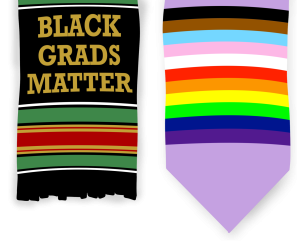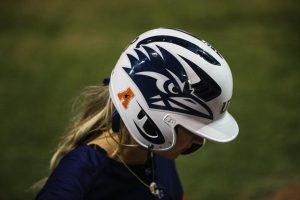It’s 12:08 a.m. on a Wednesday night at the John Peace Library. Starbucks is closed, but students aren’t ready to call it quits just yet.
Through the slew of laptops and textbooks, students sip on their tepid coffee. One student visually scans over his midterm paper while gnawing furiously at his pen. Two students have a purposeful debate about absolutism versus relativism. Some students are quietly reading while some log onto Facebook for a quick break.
Most of these students are there for the same reason- to cram.
Every weeknight, UTSA students can be found at the main campus library studying, writing papers or working on assignments. Often, these assignments are due the next morning.
“It’s normal for me to start working on an assignment until the day before or even a few hours before it’s due,” says Mayda de la Fuente, a senior political science major at UTSA. Mayda says the rush of pressure from the time crunch is what she has to be prepared for in her future career path.
“I want to get into politics and in that area of work, you always have to be on your toes. I think I can handle it because I’ve been doing it for so long,” de la Fuente says. “During college, especially my freshman year, I started drinking more coffee just to function at school. Within one day I would have eight or nine espresso shots,” she says. “But now I just have one a few hours after I wake up and wait for it to kick in, and I don’t have it every day. I still drink coffee at night though, like when I’m cramming.”
De la Fuente admits that she thrives during the night more so than during the day. It’s now 12:45 a.m. as she peers up from her Macbook. She grabs her cup of chai latte, takes gulp and looks back at her computer screen. She’s definitely used to this.
A recent study in the Journal of Adolescent Health revealed that 68 percent of college students lose sleep because of stress. Sleep is a much needed requirement for proper brain function. The average adult needs 7.5 to 8 hours of sleep per night. Research has found that Rapid Eye Movement (REM) sleep is essential for a full recharge.
In REM sleep, the sleeper is actively dreaming and in a state of deep sleep. Deep sleeping does not occur quickly after falling asleep; rather, the brain goes through multiple sleep stages. From the time a person falls asleep to the time he or she wakes, these stages must be repeated four to five times for a good night’s rest. The first stages of sleep, or non-REM sleep, are not as effective and restorative as the REM sleep stage. The average adult needs 20 to 30 percent of REM sleep per night.
Still, many students have given up on their eight hours rest. For a large amount of students who practice late night cramming sessions, alcohol and partying are the culprits of unfinished work. But how do students stay awake for such long periods of time?
Caffeine is thought to be the common stimulant of choice.
Caffeine comes in many liquid forms – coffee, tea, energy drinks and sodas – making it the popular performance-enhancing drug amongst college students.
Mayda has been drinking coffee since she was in high school, so now she has a handle of how she should limit her caffeine habits.
When consumed in the morning, caffeine can increase alertness. But when consumed at night, it can cause side effects such as rapid heart rate and anxiety.
Since the JPL Starbucks opened in late 2010, more students have been flooding the library for their late study nights, making the short trip down the stairs to retrieve their doses of caffeine and quickly getting back to their studies. The on-campus coffee shop closes at 12 a.m. from Monday through Thursday, fueling late night studying.
Energy drinks like Red Bull and Monster are also popular choices of caffeinated beverages but aren’t as readily available for students as a cup of java.
These late-night stints are not induced only by caffeine. Earlier this year, 35 percent of polled college students admitted to using Adderall, a psychostimulating drug commonly used to treat attention deficit disorders (ADD). 54 percent of people who use it admitted to getting it from friends.
“My friend gave me a 20 milligram dose of Adderall,” says John (name has been changed), a UTSA senior. “Honestly, I feel like Superman on it. I feel like I could do anything. I could tackle any papers that I need to write or any studying I need to do. The first time I took it I felt like flying.”
That “superhuman feeling” comes from an increase of dopamine, a neurotransmitter that sends positive signals to the brain. ADD students are able to feel good about achieving a task, so they can complete a task with more focus and less distractions. This feeling is more intense for those who don’t medically need Adderall, which is why it has been a go-to drug for late night studying and essay writing. Higher levels of dopamine may cause people to be more excited and motivated in achieving goals.
Known as a stimulant or “upper” drug, Adderall contains dextroamphetamine, a compound commonly used to treat narcolepsy and attention deficit-hyperactivity disorder (ADHD) and can cause serious side effects, including insomnia or of desire for sleep.
“I think Adderall is good as long as you take it early in the day, but if you take it at night you might be kept up late and probably stay awake until the next day,” says John
Last month, took an under-the-counter dosage of Adderall the night before an essay and a presentation was due. The essay was easy for him with the kick of dopamine from the Adderall, but the little orange pill kept him awake until the next night.
“I had a really, really intense headache the whole day. The sunlight was intense, more than usual. The heat was intense, more than usual. It was like I was hungover. I felt like I was missing something and I knew it was sleep, ” he said.
While many students like John have admitted to using Adderall, others, like de la Fuente, choose to stay far away from the drug commonly referred to as the “study pill.”
“I’ve heard a lot of stories of people that take it. They’re fine for the first 24 hours and then after, that they start flipping out,” says de la Fuente. “It affects people differently. I’ve never taken it and don’t plan on taking it because I think it’s cheating.”
While John uses the drug from time to time he has taken some precautions.
“I think you do have to be careful because it is an upper and it could be dangerous. It’s a bad idea to take it with other drugs, even caffeine. I actually have taken it with coffee in the past and I could just feel my heart pounding out of my chest,” John says.
Students understand the negative effects of performance-enhancing stimulants and lack of sleep on their studying habits, but most of them see it as a part of the college experience.
“I know my sleeping habits are messed up. I know that,” says de la Fuente. “But that’s why I’ve moved my schedule around it. I’ve tried methods to fix my sleeping schedule, including sleeping pills. But they always backfire. I feel like I’m much more productive this way.”









